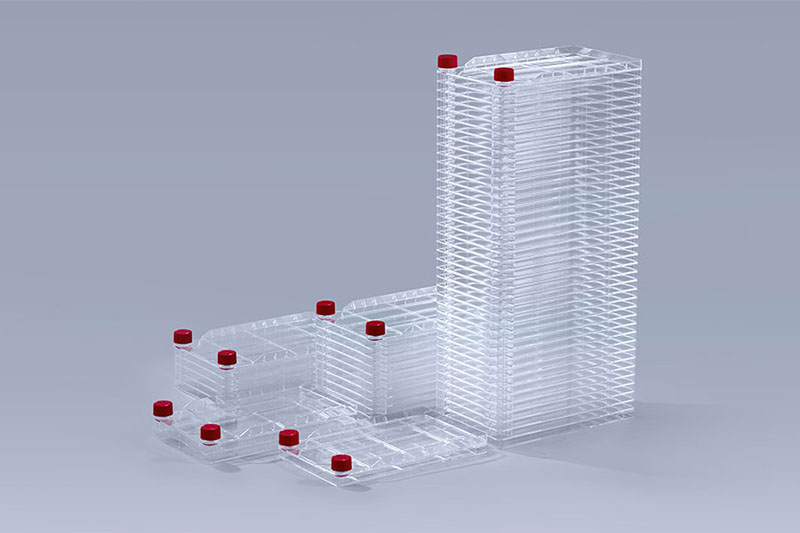In addition to paying attention to the changes in temperature, osmotic pressure, pH value and other conditions when culturing cells, it is also very important to grasp the growth status of cells. The cell factory systems are a multi-layer culture container, how should we observe the state of the cells?
1. Optical microscope observation: The morphology, structure and certain organelles of cells in the cell factory systems can be observed using an optical microscope. By adjusting the magnification and focal length of the microscope, images of different magnifications can be obtained to observe the details of cells.
2. Staining observation: By using cell staining technology, specific structures or components of cells can be displayed in color for easy observation. Commonly used staining methods include fluorescent staining and nucleic acid staining. Fluorescent staining can be used to observe the distribution and localization of specific markers through fluorescence microscopy, while nucleic acid staining can be used to observe the morphology of the nucleus and chromosome organization.
3. Cell culture observation: Put the cells into a petri dish, provide proper nutrition and environmental conditions in the culture medium, and observe the growth and morphological changes of the cells. An inverted microscope can be used to observe the dynamic changes of living cells in a culture dish, and record the characteristics of cell proliferation, migration and cell cycle.
4. Observation of cell markers: By using specific cell markers, such as fluorescent proteins or fluorescent probes, specific cellular components or organelles can be marked, so as to observe their distribution and function in cells. For example, fluorescent probes can label organelles such as the nucleus, mitochondria, and endoplasmic reticulum, thereby helping to understand cell structure and function.
5. Electron microscope observation: Electron microscopes can provide higher-resolution images to observe finer cell structures. By processing and fixing cell samples, and then using an electron microscope to observe the ultrastructure of cells, such as cell membranes, endoplasmic reticulum, mitochondria, etc.
These approaches can be used alone or in combination to gain a deeper understanding of the structure, organization and function of cells in the cell factory systems. Choose the appropriate observation method according to your needs, and make sure that proper experimental procedures and safety measures are taken before conducting the observation.
The FAI climbed 5.9 percent year-on-year in the first 11 months of 2018, quickening from the 5.7-percent growth in Jan-Oct, the National Bureau of Statistics (NBS) said Friday in an online statement.
The key indicator of investment, dubbed a major growth driver, hit the bottom in August and has since started to rebound steadily.
In the face of emerging economic challenges home and abroad, China has stepped up efforts to stabilize investment, in particular rolling out measures to motivate private investors and channel funds into infrastructure.
Friday's data showed private investment, accounting for more than 60 percent of the total FAI, expanded by a brisk 8.7 percent.
NBS spokesperson Mao Shengyong said funds into weak economic links registered rapid increases as investment in environmental protection and agriculture jumped 42 percent and 12.5 percent respectively, much faster than the average.
In breakdown, investment in high-tech and equipment manufacturing remained vigorous with 16.1-percent and 11.6-percent increases respectively in the first 11 months. Infrastructure investment gained 3.7 percent, staying flat. Investment in property development rose 9.7 percent, also unchanged.
 English
English



















































 Cell Factory Systems
Cell Factory Systems